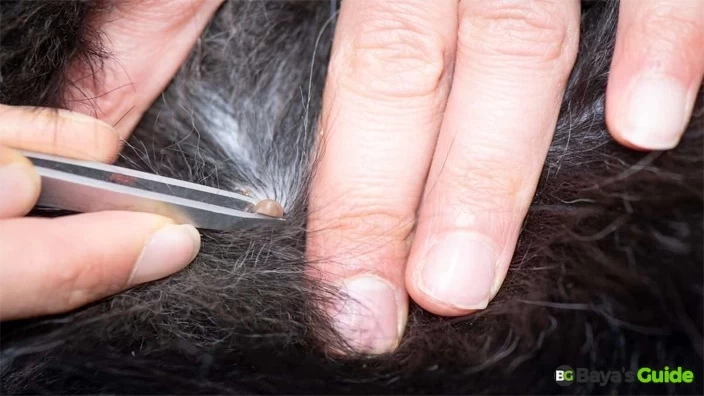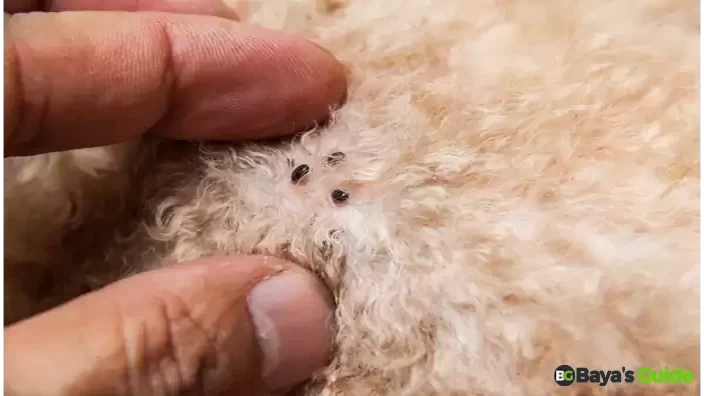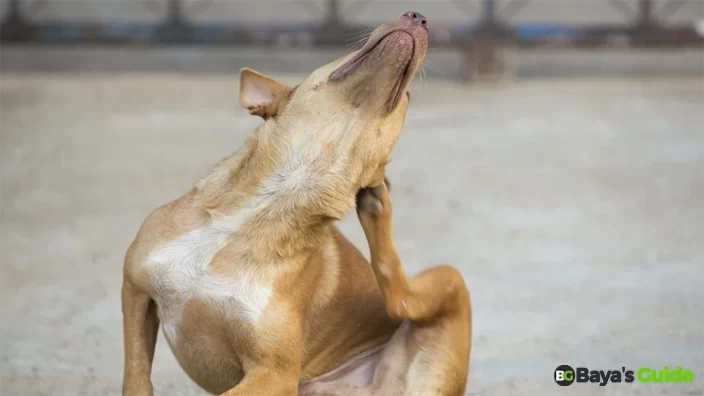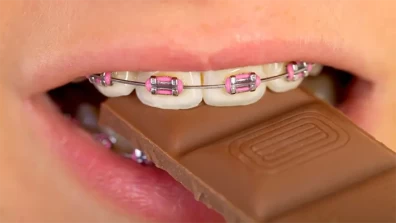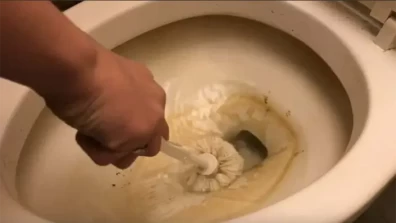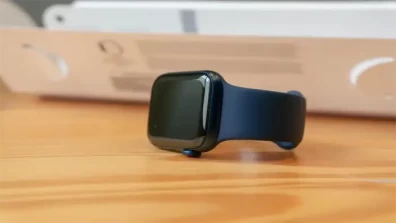The amazing world of dogs, where your four-legged family member provides boundless happiness and unbreakable devotion, knows no boundaries. On the contrary, as a responsible pet owner, this might be the sole thing you need to look for, causing a multitude of worries about the possibility of flea infestation. Often, these small and quick animals can lead the paradise of your favorite pet (dog) to an itchy nightmare. Therefore, it is critical for us to be alert to the presence of them. For instance, young dogs might suffer from anemia in case of severe flea infestation. Also, Pets, like your dogs and cats, are allergic to flea saliva.
So, they feel itch or scratch when it bites them. Therefore, you must address this issue before it's too late. But how can you do so? Don't worry, as we are here for guidance. In this article, we will explore how to tell if a dog has fleas, along with some effective ways to treat them. So let's get started!
Table of Contents
- Causes Of Fleas In Dogs
- Is Fleas A Serious Condition For Dogs?
- Common Visual Signs Of Fleas In Dogs
- How To Check If My Dog Has Fleas Or Mites?
- How To Check If My Dog Has Fleas Or Just Dry Skin?
- Ways To Tell If A Dog Has Fleas
- What To Do If Dog Has Fleas?
- How To Stop Fleas From Spreading?
- Frequently Asked Questions
- Conclusion
Causes Of Fleas In Dogs
Fleas are a common parasite that can afflict dogs, causing discomfort and health issues. Understanding the causes of fleas in dogs is crucial for prevention and effective treatment. Here are a few major causes of Fleas:
1- Contact With Infested Animals
Dogs can pick up fleas from contact with infested animals, such as other dogs, cats, or wildlife. Adult fleas are excellent jumpers and can easily transfer from one host to another.
2- Environmental Exposure
Fleas can lurk in various environments, including grassy areas, parks, and even your own backyard. Dogs may pick up fleas while exploring these spaces.
3- Indoor Infestations
Fleas can infest indoors if there are infested pets or if the space is not adequately cleaned. Even a single flea brought indoors can lead to an infestation.
Read More:How To Comfort A Dog In Heat
Is Fleas A Serious Condition For Dogs?
While fleas may seem like a mere nuisance, their infestations can lead to significant health issues for your canine companions. For instance, fleas can lead to severe discomfort for dogs. Their bites are itchy and irritating, leading to scratching, biting, and restlessness. This continuous discomfort can disrupt a dog's quality of life, affecting their behavior and overall happiness.
In addition, the continuous itching caused by flea bites may lead to skin irritations and allergic reactions, known as Flea Allergy Dermatitis (FAD). FAD can cause intense itching, hair loss, and skin infections, making a dog's life miserable. Moreover, in young puppies or dogs with weakened immune systems, a severe flea infestation can lead to anemia due to blood loss from flea feeding. Anemia can be life-threatening if not addressed promptly.
Common Visual Signs Of Fleas In Dogs
If you are wondering how to know if your black dog has fleas, it's crucial for early detection and effective treatment. These common indicators can help you identify if your dog is dealing with a flea infestation:
1- Excessive Scratching & Biting
One of the most evident signs is when your dog frequently scratches, bites, or chews at their skin, especially around the tail base, neck, and hindquarters. Flea bites cause intense itching, prompting this behavior.
2- Visible Fleas
In some cases, you may actually see fleas on your dog's skin or fur. They are small, dark brown insects that are highly mobile and may jump when exposed to light.
3- Flea Dirt
Fleas leave behind tiny, dark, speck-like flea feces, often referred to as "flea dirt." You can usually spot these specks in your dog's fur, especially if you use a fine-toothed comb. To confirm if it's flea dirt, place the specks on a damp paper towel – if they turn reddish-brown, it's a clear sign of fleas as flea dirt or flea droppings consist of digested blood.
4- Red Or Irritated Skin
Flea bites can lead to redness, irritation, and small red bumps or welts on your dog's skin. These can be more noticeable in dogs with lighter-colored fur.
5- Hair Loss & Hot Spots
Persistent flea infestations can cause hair loss, often seen in patches. These areas may also become inflamed and develop into red, painful spots.
How To Check If My Dog Has Fleas Or Mites?
Detecting whether your dog has fleas or mites requires keen observation and knowledge of their distinct characteristics. Fleas are tiny, reddish-brown insects that move quickly through your dog's fur. If you notice your dog scratching excessively, particularly around their neck, tail base, or groin, and you see small, dark specks (flea dirt) in their fur, it's likely fleas. Moreover, flea bites often lead to small red bumps or rashes on your dog's skin.
Mites, on the other hand, are microscopic parasites that can cause intense itching and skin irritation. Common signs of mites include hair loss, redness, and crusty patches on the skin. If your dog displays these symptoms, especially around its ears or paws, it could indicate mites. Still unsure whether your dog is suffering from fleas or mites? We would recommend you seek professional help, as they would better examine the condition and provide solutions as well.
How To Check If My Dog Has Fleas Or Just Dry Skin?
Distinguishing between fleas and dry skin in dogs is crucial for effective treatment. Dry skin is often a result of environmental factors, allergies, or inadequate grooming, and it doesn't involve the presence of insects. Signs of dry skin include flakiness, itchiness, and dandruff, which typically affect various areas of your dog's body.
In contrast, fleas are parasitic insects that cause itching and discomfort. The signs are already mentioned above, so go through them to compare and figure out whether it's fleas or just dry skin. However, if you're unsure or concerned about your dog's condition, consult your veterinarian for a proper diagnosis and guidance.
Ways To Tell If A Dog Has Fleas
Ways | Descriptions |
| Scratching & Biting | Pay attention to signs of excess scratching, biting, or licking by your dog, which may be an indication of flea infestation. |
| Red OR Irritated Skin | When examining your dog's skin, check for redness or small bumps around the neck, tail base, and hindquarters as indicators of fleas. |
| Visible Fleas | On your dog's body, look for fleas or flea dirt in areas with less hair. It will look like small black specks. |
| Allergic Reactions | Watch for signals of allergic reactions as in case of persistent itching, hot spots, or hair loss, indicating flea bites. |
| Restlessness OR Agitation | Watch for the increased restlessness, agitation, or other discomfort signs in your dog suggesting flea-related irritation. |
| Pale Gums | See if your dog's gums are pale since fleas lead to anemia and a decrease in the number of red blood cells. |
| Flea Dirt On Bedding | Look for little, black specks (flea dirt) in the bedding which turn red when wet thus indicating a flea infestation. |
| Excessive Grooming | Look out for signs of excessive grooming, as a dog may groom excessively in order to relieve itching caused by fleas. |
What To Do If Dog Has Fleas?
Unfortunately, addressing a flea problem isn't a simple or overnight fix. Fleas multiply rapidly, so when they appear on a dog, it often leads to a full-blown infestation in your home or yard. To effectively eliminate fleas, pet owners must tackle both their furry animal and the surrounding environment. The good news is that there are numerous safe and effective ways available for treating and preventing fleas in dogs.
1- Give Your Pet A Bath
To begin with, give your pet a bath in lukewarm water or mild soap to remove fleas from their fur and skin. You can also utilize a flea shampoo to get rid of those creepy pests quickly. However, it's wise to consult a veterinarian first, as such products can strip natural oils and potentially irritate sensitive skin or open wounds.
2- Use A Fine-Tooth Flea Comb
Fleas are small and quick, making them challenging to catch. In such a situation, it's advisable to utilize a flea comb on your pet's skin. You can enhance its effectiveness by dipping it in a water and dish soap mixture to trap and drown the fleas.
3- Dispose Of Captured Fleas
If you find fleas on the comb, place it in hot, soapy water to eliminate them. Avoid attempting to crush fleas by hand, as they are agile and challenging to kill this way.
4- Use An Apple Cider Vinegar Solution
While apple cider vinegar won't kill fleas, it can act as a repellent due to its unpleasant smell and taste for fleas. Dilute apple cider vinegar in water and apply it to your pet's fur using a spray bottle or a brush if your pet dislikes being sprayed.
5- Consult A Veterinarian
While most flea infestations can be managed without a vet visit, you should still seek veterinary assistance, especially if your pet exhibits the following signs:
- Lethargy
- Unexplained Weight Loss
- Scooting Behavior
- Presence Of Tapeworm Segments In Stool
- Pale Gums
How To Stop Fleas From Spreading?
When you spot an adult flea, there could be as many as 100 flea eggs or young fleas lurking in your environment. Without addressing this properly, a flea infestation can quickly reappear in a matter of days, weeks, or months. Here are some effective steps to tackle this issue:
- Regularly vacuum your living spaces, ensuring you dispose of the vacuum bag or thoroughly clean a reusable one.
- Wash all bedding, linens, and furniture using hot water in your washing machine. If your dog's bed isn't washable, it's advisable to replace it. Look for pet beds with removable, washable covers for easier maintenance.
- Treat all pets in your household, as fleas can easily transfer between dogs and even spread to cats or other pets like ferrets.
- Maintain your yard by regularly mowing the grass and trimming overgrown plants. Seal off crawl spaces or areas beneath patios to discourage wildlife that may carry fleas. Fleas prefer dark, moist environments, so open and sunny areas are less conducive to flea reproduction.
- Seek professional pest control services for both your home and yard. Be sure to opt for a company experienced in pet safety. You can also ask your veterinarian for recommendations to prevent the spread of fleas effectively.
Frequently Asked Questions
Can You See Fleas If Your Dog Has Them?
Fleas are tiny, but they can be seen on your dog's skin, especially around the neck and tail areas. They appear as small, dark, fast-moving insects.
Are Fleas Killing My Dog?
Fleas alone rarely kill dogs, but they can cause severe discomfort and skin issues and transmit diseases. If left untreated, fleas can weaken a dog's health over time.
Do Fleas Bite Humans?
Yes, fleas can bite humans if they are present in your home. Flea bites on humans typically cause itchy, red welts. Proper pet and home treatment can prevent this.
Do Fleas Go On Humans?
Fleas primarily infest pets, but they may jump on humans temporarily for a blood meal. Good hygiene and treating your pets for fleas can help prevent human infestations.
How Can I Kill Them Instantly?
What you have to do is to buy Nitenpyram for this purpose. It is also known with the name of Capstar. It is a single-use tablet that can be administered orally to kill adult fleas on dogs instantly. You can use it to kill them within half an hour. Keep your pet in a small area when using it.
Conclusion
To wrap it all up, whether your dog has fleas is a crucial aspect of responsible pet ownership. By paying close attention to the signs and symptoms, such as excessive scratching, flea dirt, or visible insects, you can quickly detect a flea infestation. We have also outlined treatment methods, along with some ways to prevent fleas from spreading. So read them and make your dog free from fleas now! Did your pet ever go through a painful flea infestation? What measures did you take to treat it? Please let us know your thoughts in the comments section!


